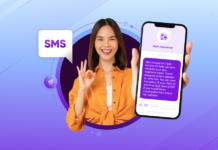Insurance companies have been playing catch up when it comes to the digital experience they provide to their policyholders and agents. The precedent set by other industries has elevated customer expectations, leaving insurers racing to digitally transform.
The digital self-service capabilities available to policyholders and agents today vary greatly by carrier, but generally speaking, insurers have made progress in enabling their customers to do more online than they ever have before.
From getting a quote to making a payment to filing a claim, insurers are prioritizing upgrading the front-end experience across the policy lifecycle. This approach tracks with customer expectations and preferences. Studies have found across industries that an overwhelming majority of consumers turn to digital first to shop or resolve a need.
In the insurance industry, though, few carriers are delivering an end-to-end digital self-service experience for any action.
Quantum Metric published the below graphic that shows the percentage of insurance customers who used just technology to complete their action compared to those who used technology but also spoke with a human and those who just spoke with a human.
As you can see from the graphic, no actions were completed with just technology even a third of the time. Despite digital First Notice of Loss (FNOL) being more prevalent in the industry, the survey found just 7% of customers submitted an insurance claim using only technology.
In the truest sense of the phrase, digital self-service allows you to provide online support to your customers without requiring any help from a human agent.
The reality is the vast majority of insurance customers today are not having a wholly self-service experience. And it isn’t for a lack of trying.
For every action in the survey above, more than half of customers leveraged technology for their interaction. Insurance customers are taking advantage of the digital self-service capabilities carriers are rolling out, but carriers must also consider what that experience looks like when the customer can’t or doesn’t want to complete the interaction without speaking with a human rep.
The data shows that for most actions, the customer is going to try to self-serve online but will likely reach out for assistance along the way. This is where insurance companies have the ability to provide a differentiated experience.
Pairing Digital Customer Service with Self-Service
Let’s imagine a scenario today where a policyholder has incurred a loss and needs to file a claim with their insurance company. They head to their insurer’s website and find the page where they can submit their First Notice of Loss.
They begin filling out the form when they encounter a question they’re unsure how to answer. In the survey, something similar to this happens 61% of the time! For carriers who don’t offer any digital interaction options, such as Chat or OnScreen Voice, the claimant is forced to locate a customer service phone number, go through the IVR process, and explain to the rep their situation.
To make matters worse, the rep has no visibility into where the claimant is in the FNOL process. In all likelihood, the claimant is going to be forced to restart the submission process from the beginning over the phone. This is a waste of time for the claimant and the carrier.
Now, let’s reimagine this scenario for a carrier that has a Digital Customer Service solution. When the claimant hits that point of friction in the submission process and wants to speak with a human, they have multiple interaction options available on screen. They could begin chatting with a customer service rep (CSR), start a call over digital audio, or even talk over video.
The CSR, meanwhile, could have immediate visual context of where the claimant is on the form with a feature like Glia’s Live Observation. And with CoBrowsing, the CSR and claimant could actually complete the rest of the submission together.
Carriers should continue to offer and enhance digital self-service features. Actions like online bill pay and viewing the status of a claim should ideally be completed with no support needed from your CSRs.
But other actions, like filing a claim or seeking coverage advice, are often going to require human support. As customers continue to seek out the ability to complete those types of activities online, carriers must consider aligning their support strategy to be digital-first.
Pairing Digital Customer Service with digital self-service boosts customer satisfaction while simultaneously improving an organization’s operational efficiency. It’s a true win-win for carriers and their customers.
Interested in learning more about how innovative carriers are redefining how they interact with their policyholders and agents? Check out our white paper How P&C Insurers Are Using Digital Customer Service as a Differentiator.





